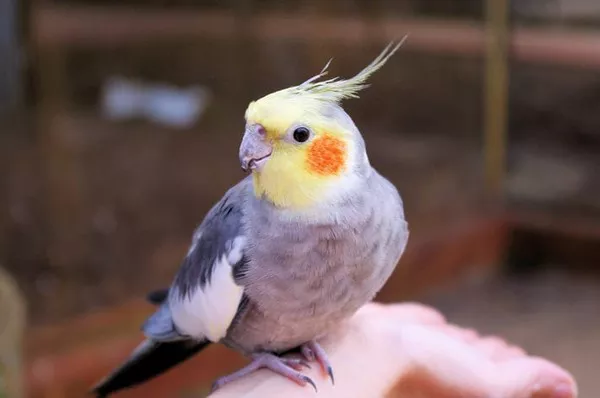Conures are a type of small to medium-sized parrot known for their vibrant colors, playful personalities, and high intelligence. They belong to the genus Aratinga and are popular as pets due to their affectionate nature and ability to mimic human speech. A common question among bird enthusiasts is whether conures are native to Mexico. In this article, we will explore the natural habitats of conures, their distribution, and how they relate to Mexico in terms of native habitats. We will also dive into their behavior, care requirements, and why Mexico is an important region for certain species of conures.
What Are Conures?
Before diving into the question of whether conures are native to Mexico, it’s important to understand what conures are and why they are often a popular choice for pet owners.
Conures are parrots in the family Psittacidae, a diverse group that includes more than 350 species of parrots. Conures, however, are distinguished by their relatively small to medium size, long tails, and bright, often iridescent plumage. Some conures are known for their “cheerful” personalities, and their ability to mimic speech and make playful sounds makes them ideal companions for people looking for an interactive pet.
Conures come in various colors, with species exhibiting combinations of green, yellow, orange, red, and blue feathers. Their diets primarily consist of seeds, fruits, nuts, and vegetables, and they are known to be highly social, enjoying interaction with their human owners and other birds.
There are many different species of conures, and some are native to specific regions in Central and South America. The most commonly recognized species include the Sun Conure (Aratinga solstitialis), the Green-cheeked Conure (Pyrrhura molinae), and the Jenday Conure (Aratinga jandaya).
The Distribution of Conures
Conures are found in a variety of regions, predominantly in Central and South America. They typically inhabit forests, savannas, and other tropical or subtropical areas. The exact distribution of conures depends on the species, but many of them are found in the wild across the following regions:
Central America: Countries like Mexico, Guatemala, Honduras, and Nicaragua.
South America: Including Venezuela, Colombia, Brazil, and Ecuador.
Caribbean Islands: Some species, such as the Hispaniolan Parakeet (Aratinga chloroptera), are native to the Caribbean.
While there are many species of conures, most are indigenous to tropical and subtropical regions where the climate is warm and the vegetation is dense. These birds are often found in forests, but they can also be seen in more open habitats like savannas and grasslands. Some conures even live near human settlements, adapting to environments where food sources like fruits and seeds are abundant.
Are Conures Native to Mexico?
Now, let’s address the main question: Are conures native to Mexico?
The answer is yes—several species of conures are indeed native to Mexico. In fact, Mexico is home to some of the most well-known species of conures, and the country plays a critical role in the distribution of these birds. Conures are found in various regions of Mexico, from tropical lowlands to mountainous areas. Some of the most famous conure species that are native to Mexico include:
The Green-cheeked Conure (Pyrrhura molinae): Although the Green-cheeked Conure is found in several countries, including parts of South America, it is also native to the southern regions of Mexico. These birds are often found in forested areas in Mexico’s highlands, particularly in places like the states of Veracruz and Oaxaca. They are well-known for their playful and social personalities, making them a popular pet choice.
The Yellow-headed Parrot (Amazona oratrix): While not a true conure in the strictest sense (as it belongs to the Amazon genus), the Yellow-headed Parrot is closely related and has characteristics similar to those of the conure. This bird is found in Mexico, particularly in the Yucatán Peninsula. It is famous for its intelligence, vocal abilities, and striking appearance.
The Mexican Red-headed Conure (Aratinga erythrogenys): The Mexican Red-headed Conure, also known as the Red-fronted Parakeet, is native to Mexico. This species is characterized by its vibrant red and green plumage. It can be found in the central and southern regions of Mexico, including areas like the state of Guerrero.
The White-crowned Parrot (Pionus senilis): Again, although not a true conure, the White-crowned Parrot shares similar traits and can be found in parts of Mexico. This species is recognized for its peaceful temperament and the white markings on its head, which contrast with its green body.
Conures in Mexico’s Ecosystem
Conures are well adapted to Mexico’s diverse ecosystems. Mexico’s varied geography—ranging from tropical lowlands to arid regions and mountainous highlands—offers conures a range of habitats where they can thrive. These birds are typically found in forests, particularly those with abundant fruit-bearing trees, which provide a natural food source for the birds. The forests of Mexico’s Pacific Coast, as well as the Yucatán Peninsula, are among the regions where conures are most commonly found.
While these birds do well in tropical environments, they are also able to adapt to a range of climates. Some species of conures are even found in more arid regions, where they have adapted to the dry conditions by feeding on seeds and fruit from cacti and other desert plants.
One of the key reasons Mexico is such a suitable habitat for conures is the country’s rich biodiversity. The forests, savannas, and tropical regions of Mexico provide a wide range of plant life, much of which is ideal for conures to feed on. These parrots are frugivorous, meaning they primarily eat fruits, seeds, and nuts. The availability of these food sources in Mexico’s diverse ecosystems helps sustain the various species of conures native to the region.
How Conures Adapt to Mexico’s Climate
Mexico is a country known for its varied climate, ranging from the tropical conditions found along its coasts to the more temperate and dry conditions found in its interior. Conures are highly adaptable and have evolved to live in a wide range of environmental conditions. This adaptability is evident in the way different species of conures have adjusted to life in Mexico’s different climates.
For example, species like the Green-cheeked Conure are found in the highland regions of southern Mexico, where temperatures can be cooler than in the tropical lowlands. These birds have adapted to cooler, more temperate climates and thrive in the forests of the Sierra Madre del Sur. Meanwhile, other species such as the Mexican Red-headed Conure are found in hotter, more arid regions, where they have adapted to the dry conditions by feeding on seeds, fruits, and nuts from plants that are able to withstand the harsh climate.
Conservation of Mexican Conures
Conures, like many other species of birds, face challenges when it comes to conservation. Habitat loss, illegal trapping, and the pet trade have all had a significant impact on wild populations. In Mexico, some species of conures, such as the Mexican Red-headed Conure, have been classified as near-threatened or vulnerable due to habitat destruction and overexploitation. Deforestation, agriculture, and urbanization have all contributed to the decline in available habitats for these birds.
Conservation efforts are underway to protect conure populations in Mexico. Organizations like the World Parrot Trust and local wildlife conservation groups work to monitor and protect the habitats of these birds. One important aspect of conservation is educating the public about the dangers of the illegal pet trade and encouraging responsible pet ownership.
Conures as Pets: The Mexican Connection
Many people in Mexico and around the world keep conures as pets. These birds are known for their affectionate nature, and they can form strong bonds with their owners. However, owning a conure requires a commitment to proper care and attention, especially given the fact that many species of conures are native to tropical environments.
If you’re considering adopting a conure as a pet, it’s important to research the species to determine its specific needs. Conures require a varied diet that includes fruits, vegetables, and high-quality pellets. They also need plenty of social interaction, as they are highly social birds that thrive on companionship. Conures can be loud, so potential pet owners should be prepared for the noise level that comes with owning these birds.
Conclusion
To answer the question, “Are conures native to Mexico?”—the answer is yes, several species of conures are indeed native to Mexico. The country’s rich biodiversity, varied climates, and abundance of food sources make it an ideal habitat for these beautiful birds. Conures are an integral part of Mexico’s ecosystem, particularly in tropical and temperate regions, where they thrive in forests and other natural habitats.
However, like many bird species, conures are facing challenges from habitat loss and the pet trade. Conservation efforts are essential to ensure the continued survival of these birds in the wild. If you’re considering owning a conure as a pet, remember that these birds require proper care, attention, and social interaction to live healthy, happy lives.
In the end, conures are not just native to Mexico—they are a symbol of the country’s rich natural heritage. With responsible conservation practices, future generations can continue to enjoy the beauty and joy these birds bring to the world.
Related Topics:























